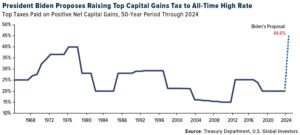On Friday morning I was perplexed. The monthly employment numbers for February were released before the open that morning, and they revealed an improving labor economy with nearly 300,000 more jobs created in the past two months than economists expected. I usually write these pieces about an hour after the market opens, and I was surprised that the market was selling off after receiving a result that should have been one that it wanted. I explained it this way:
“If the market were in a better psychological state, this would be considered a “Goldilocks” result – not too hot and not too cold. It’s a labor market that is improving, but not far and fast enough to cause the Fed to veer away from an accommodative stance.”
But there was a problem:
“As I write this, the S&P 500 (SPX) is down about 0.75% and the NASDAQ 100 (NDX) is down over 1.5%. The VIX index is resuming its flirtation with 30, indicating investors’ increasing desire for protection. We now have to ask ourselves what has equity investors so spooked – especially when they can’t blame an unchanged bond market.”
As it turns out, there was no answer. At 11:25, around the time I submitted the piece for publication, major indices bottomed out and began a nearly uninterrupted rally for the rest of the day. SPX closed nearly 2% higher on the day, while NDX was up over 1.6%. A wide range of traders and investors decided to focus on the positive messages coming from the labor market. Over the past couple of weeks we heard Federal Reserve Chair Powell state quite clearly that he had no intention of recommending that the Fed raise interest rates until we returned to full employment. That message somehow clicked in, seemingly out of the blue.
There is a crucially important message to be gleaned here, and it is why I focus much more upon lessons about market mechanisms and psychology rather than day to day market movements. Markets become enamored with narratives, and that can lead to sloppy and sometimes irrational points of focus for traders. The narrative that was in play much of last week – until it abruptly changed its mind around midday Friday – was that higher bond rates would put pressure on equities. There is indeed a logic to that, because an overarching theme over the past few years was “TINA”, an acronym for “There Is No Alternative.” Low interest rates offer few incentives for investors to abandon the prospects for growth in the equities. Also, those low rates can bolster equity valuations by allowing investors to discount future cash flows at extraordinarily high levels.
But it is lazy for traders to blindly follow a narrative. A narrative works for as long as others (or trend following algorithms) follow it. If the logic behind the narrative persists, it can be lucrative. It’s another trend to follow, and trend following often works. But trends can change rapidly and almost always without warning. On Friday, we saw an example of that trend change. Today we saw similar trend changes between the pre-market and the start of trading, with a couple of bounces in-between. As of now, we are near the day’s highs, but who knows how we will close.
There was one piece of vindication in my piece from Friday. The final paragraph led with something prescient:
“That said, various technical indicators are pointing to major US indices as heavily oversold. That could result in a sharp snapback rally…”
I just wish I had finished the paragraph with “starting in a few minutes.”
Disclosure: Interactive Brokers
The analysis in this material is provided for information only and is not and should not be construed as an offer to sell or the solicitation of an offer to buy any security. To the extent that this material discusses general market activity, industry or sector trends or other broad-based economic or political conditions, it should not be construed as research or investment advice. To the extent that it includes references to specific securities, commodities, currencies, or other instruments, those references do not constitute a recommendation by IBKR to buy, sell or hold such investments. This material does not and is not intended to take into account the particular financial conditions, investment objectives or requirements of individual customers. Before acting on this material, you should consider whether it is suitable for your particular circumstances and, as necessary, seek professional advice.
The views and opinions expressed herein are those of the author and do not necessarily reflect the views of Interactive Brokers, its affiliates, or its employees.
































